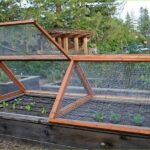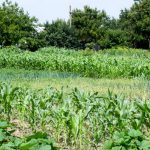Are you struggling with vegetable gardening in sandy soil? Sandy soil can present unique challenges for growing vegetables, but with the right knowledge and techniques, you can still have a successful and thriving garden. In this article, we will explore the characteristics of sandy soil that make it challenging for vegetable gardening and provide practical tips and strategies to overcome these challenges.
Sandy soil is known for its poor water retention and nutrient deficiencies, making it less than ideal for growing vegetables. However, by choosing the right vegetables, amending the soil, implementing proper watering techniques, using mulch, fertilizing, and managing pests and diseases effectively, you can create a healthy and productive vegetable garden even in sandy soil.
Understanding the specific nature of sandy soil is crucial for successful vegetable gardening. In the following sections, we will delve into the best practices for selecting suitable vegetables, preparing the soil, watering effectively, enhancing fertility through mulching and fertilizing, as well as managing common pests and diseases.
Additionally, we will also feature success stories and practical tips from experienced vegetable gardeners who have achieved remarkable results in sandy soil environments. Whether you’re a novice or experienced gardener facing challenges with sandy soil, this article will provide valuable insights to help you achieve a flourishing vegetable garden.
Choosing the Right Vegetables for Sandy Soil
When it comes to vegetable gardening in sandy soil, selecting the right vegetables is crucial for success. Sandy soil tends to drain quickly and can be low in nutrients, making it challenging for many plants to thrive. However, there are several vegetables that are well-suited to these conditions, particularly those that are drought-tolerant and have deep roots.
Here are some excellent options for vegetable gardening in sandy soil:
- Carrots: Carrots are a great choice for sandy soil due to their ability to penetrate deeply into the ground. They prefer loose, well-drained soil, making sandy soil an ideal growing medium.
- Radishes: Radishes have a short growing season and can tolerate the quick drainage of sandy soil. Their shallow roots make them well-adapted to this type of environment.
- Peppers: Peppers thrive in warm, dry conditions and can handle the fast-draining nature of sandy soil. They also benefit from the added warmth that sandy soil provides.
In addition to these specific vegetables, it’s important to consider drought-tolerant varieties of other popular crops such as tomatoes, beans, and squash when planning a garden in sandy soil. By choosing the right vegetables for these conditions, gardeners can set themselves up for success and bountiful harvests.
It’s important to note that while these vegetables are well-suited for sandy soil, proper soil preparation and maintenance are still essential for optimal growth. Amending the soil with compost or organic matter can help improve its water retention and nutrient content, giving these vegetables the best possible chance of success in a challenging environment.
Soil Preparation
Sandy soil presents a unique set of challenges for vegetable gardening due to its fast-draining and nutrient-poor nature. However, with proper soil preparation, it is possible to create an environment in which vegetables can thrive. The key to successful vegetable gardening in sandy soil lies in amending the soil to improve its structure, water retention, and nutrient content.
To prepare sandy soil for healthy vegetable growth, consider the following steps:
1. Testing the Soil: Before making any amendments, it’s important to test the sandy soil to understand its pH level and nutrient deficiencies. This will guide you in determining which specific amendments are needed to improve the soil quality for growing vegetables.
2. Adding Organic Matter: One of the most effective ways to amend sandy soil is by incorporating plenty of organic matter such as compost, aged manure, or leaf mold. These materials help improve the soil’s fertility, structure, and water-holding capacity.
3. Incorporating Soil Amendments: In addition to organic matter, consider adding amendments such as peat moss or coconut coir to further enhance water retention and balance out the sandy texture of the soil. Additionally, adding small amounts of clay can help bind sand particles together and improve nutrient retention.
By taking these steps to amend sandy soil before planting your vegetables, you can create a more hospitable environment for your plants’ roots and set the stage for a successful vegetable garden in sandy soil conditions. With proper preparation and care, even challenging soils can be transformed into productive growing spaces for a variety of delicious vegetables that will thrive despite the inherent obstacles presented by sandy soils.
Watering Techniques
Sandy soil presents a unique challenge for vegetable gardening due to its fast-draining nature, which can lead to difficulties in retaining moisture and nutrients. However, with the right watering techniques, it is possible to maintain healthy and productive vegetable crops in sandy soil environments.
One of the best practices for keeping sandy soil moist and nutrient-rich is through the use of drip irrigation systems. Drip irrigation delivers water directly to the base of plants, reducing evaporation and ensuring efficient water distribution. This method is especially beneficial for sandy soil as it helps to prevent water runoff and allows the soil to absorb moisture more effectively.
In addition to drip irrigation, mulching plays a crucial role in retaining moisture in sandy soil. Applying a layer of organic mulch such as straw, wood chips, or compost around vegetable plants helps to prevent rapid evaporation and also improves soil structure over time. By incorporating mulching into your watering routine, you can maintain consistent moisture levels in sandy soil, promoting healthy vegetable growth.
Another effective watering technique for sandy soil vegetable gardening is utilizing soaker hoses. Soaker hoses deliver water directly to the root zones of plants, minimizing waste and maximizing absorption by the soil. This method is particularly beneficial for deep-rooted vegetables that require consistent hydration, helping them thrive in sandy soil conditions.
| Watering Technique | Benefits |
|---|---|
| Drip Irrigation | Efficient water distribution and reduced evaporation |
| Mulching | Prevents rapid evaporation and improves soil structure |
| Soaker Hoses | Direct delivery to plant root zones, minimizing waste |
Mulching
The Benefits of Mulching
Mulching serves as a protective barrier for sandy soil, helping to reduce evaporation and erosion while also regulating soil temperature. This is particularly important for sandy soil, which tends to dry out quickly and become too hot during the summer months. Organic mulches like straw, leaves, grass clippings, or wood chips also gradually decompose, adding much-needed organic matter to the soil and improving its structure.
Choosing the Right Mulch Materials
When mulching sandy soil, it’s essential to select the right materials that will help retain moisture and add nutrients. Many experienced gardeners recommend using fine-textured mulches that break down slowly, such as compost or shredded bark. These materials can effectively enhance the fertility of sandy soil over time and create a more conducive environment for vegetable growth.
Application Techniques
For best results, apply a layer of organic mulch around your vegetable plants, leaving some space around their stems to prevent rotting. Depending on the type of mulch used, it may need to be replenished periodically as it breaks down. Additionally, watering techniques should be adjusted to ensure that the mulch remains consistently moist to facilitate decomposition and nutrient release into the sandy soil.
By utilizing proper mulching techniques with organic materials in vegetable gardening in sandy soil environments, gardeners can greatly improve their chances of success. With patience and diligence in maintaining organic mulch layers in their gardens, they can gradually transform their challenging sandy soil into a fertile growing medium suitable for various vegetables.
Fertilizing
Understanding the Nutrient Needs of Vegetables in Sandy Soil
One of the main challenges of growing vegetables in sandy soil is the rapid leaching of nutrients. Sandy soil has a low capacity to hold onto essential nutrients such as nitrogen, phosphorus, and potassium, which are crucial for healthy plant growth. Therefore, it’s important to understand the specific nutrient needs of the vegetables you’re growing and tailor your fertilizing approach accordingly.
Slow-Release Fertilizers
In sandy soil, traditional water-soluble fertilizers may quickly wash away before plants can fully absorb them. To combat this issue, consider using slow-release fertilizers that provide a steady supply of nutrients over an extended period. This will help maintain consistent nutrient levels in the soil and reduce the risk of nutrient deficiencies in your vegetable garden.
Organic Matter and Compost
In addition to using commercial fertilizers, integrating organic matter into sandy soil can significantly improve its fertility. Incorporating compost, well-rotted manure, or other organic materials into the soil helps enhance its structure and nutrient-holding capacity. This can create a more favorable environment for vegetable roots to access essential nutrients and moisture, ultimately promoting healthier plant growth despite the challenges posed by sandy soil.
By focusing on these best practices for fertilizing in sandy soil, you can effectively maintain nutrient levels and support optimal vegetable growth in your garden. Experimenting with different approaches and finding the right balance of fertilization will be crucial for success when cultivating vegetables in this type of challenging soil.
Pest and Disease Management
When it comes to vegetable gardening in sandy soil, one of the major challenges is dealing with pests and diseases that thrive in this type of soil. Sandy soil has poor water retention and drainage, which can make plants more vulnerable to certain issues. However, with the right strategies, gardeners can effectively manage these common problems and maintain a healthy vegetable garden.
One key aspect of pest and disease management in sandy soil is maintaining the overall health of the plants. Healthy plants are more resilient to pests and diseases, so it’s important to focus on soil preparation, proper watering techniques, and regular fertilization. By amending sandy soil with organic matter and providing deep watering to promote strong root systems, gardeners can create a more hospitable environment for their vegetables.
Additionally, choosing the right vegetables for sandy soil can help reduce the risk of pest and disease issues. Drought-tolerant and deep-rooted vegetables are often better suited for sandy soil, as they can withstand the challenges posed by this type of growing medium. By selecting varieties that are well-adapted to sandy soil conditions, gardeners can minimize the likelihood of common problems such as root rot or fungal diseases.
For successful pest and disease management in vegetable gardening in sandy soil, proactive monitoring is essential. Regularly inspecting plants for signs of infestation or infection allows gardeners to address issues early on before they escalate. Incorporating natural pest control methods such as beneficial insects or companion planting can also help keep potential problems at bay.
| Aspect | Details |
|---|---|
| Maintaining plant health | Focus on soil preparation, proper watering techniques, and regular fertilization |
| Choosing the right vegetables | Select drought-tolerant and deep-rooted varieties to minimize risk |
| Proactive monitoring | Regular inspections for signs of infestation or infection; Incorporating natural pest control methods |
Success Stories
In conclusion, vegetable gardening in sandy soil can be a challenging but rewarding endeavor. By understanding the unique characteristics of sandy soil and taking the necessary steps to amend it, gardeners can successfully cultivate a thriving vegetable garden. Choosing the right vegetables, preparing the soil, implementing proper watering techniques, and using mulch and fertilizer are crucial in maintaining healthy and nutrient-rich sandy soil for optimal vegetable growth.
Real-life experiences from experienced vegetable gardeners in sandy soil environments provide valuable insight and tips for success. Their stories serve as inspiration and guidance for those facing similar challenges. With dedication, patience, and the implementation of helpful techniques, it is possible to overcome the limitations of sandy soil and enjoy a bountiful harvest of vegetables.
Ultimately, with the right knowledge, tools, and determination, vegetable gardening in sandy soil is not only possible but can also lead to great success. Applying the best practices outlined in this article combined with the wisdom shared by experienced gardeners will help anyone transform their sandy soil into a fertile ground for growing healthy and abundant vegetables.
Frequently Asked Questions
Do Cucumbers Like Sandy Soil?
Cucumbers generally prefer well-draining soil, which sandy soil can provide. However, it’s important to amend sandy soil with organic matter like compost to improve its fertility and water retention for optimal cucumber growth.
How Do You Prepare Sandy Soil for a Vegetable Garden?
To prepare sandy soil for a vegetable garden, start by adding organic matter such as compost, aged manure, or leaf mold. This will help improve the soil structure and water-holding capacity. Consider adding mulch to further retain moisture.
What Is the Best Crop to Grow in Sandy Soil?
The best crop to grow in sandy soil is often root vegetables like carrots, potatoes, and radishes. These crops are well-suited to the well-draining nature of sandy soil and don’t suffer from issues related to excess moisture retention.
Additionally, legumes like peas and beans can thrive in sandy soil due to their ability to fix nitrogen in the soil.

If you’re looking to get into vegetable gardening, or are just looking for some tips on how to make your current garden better, then you’ve come to the right place! My name is Ethel and I have been gardening for years. In this blog, I’m going to share with you some of my best tips on how to create a successful vegetable garden.





